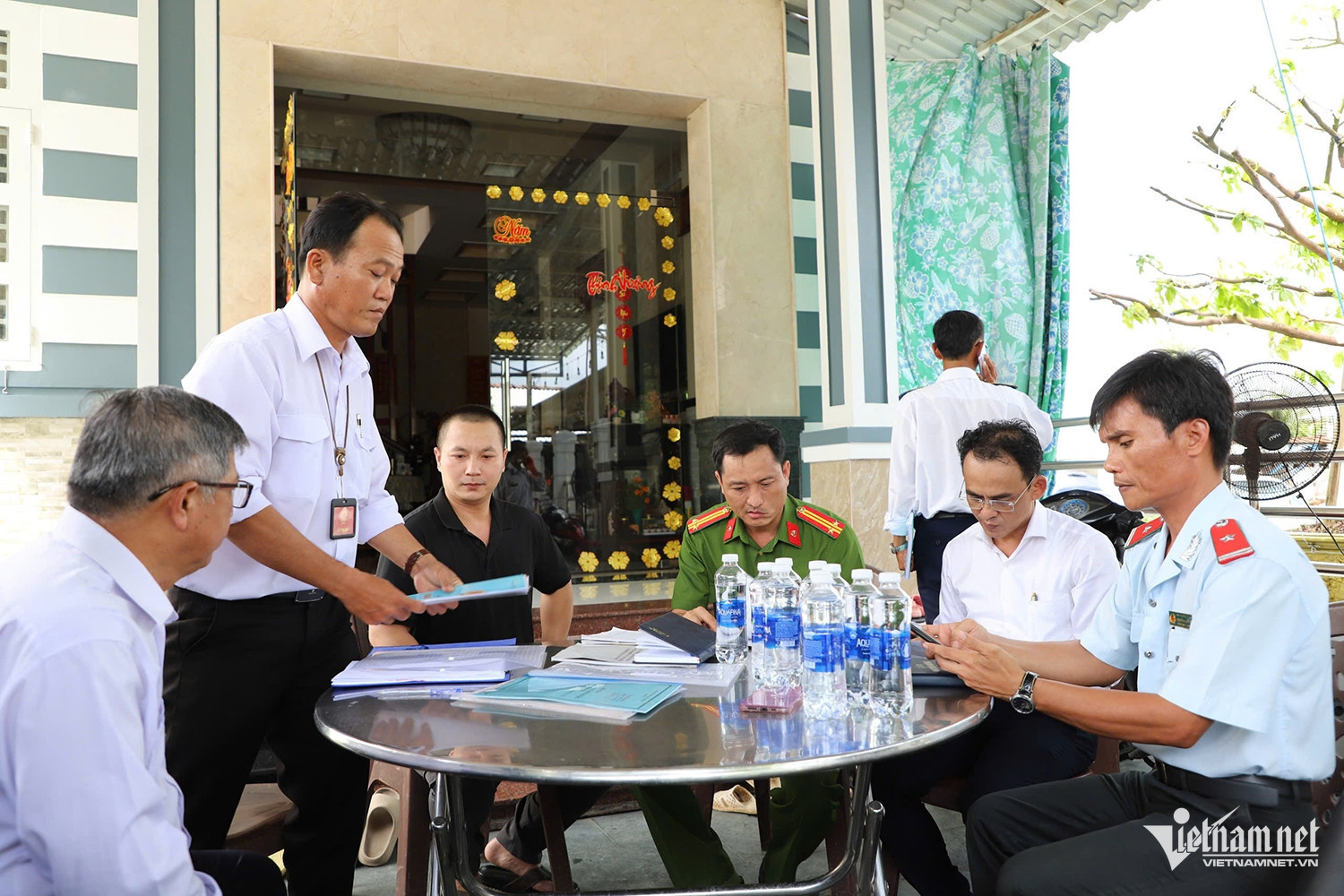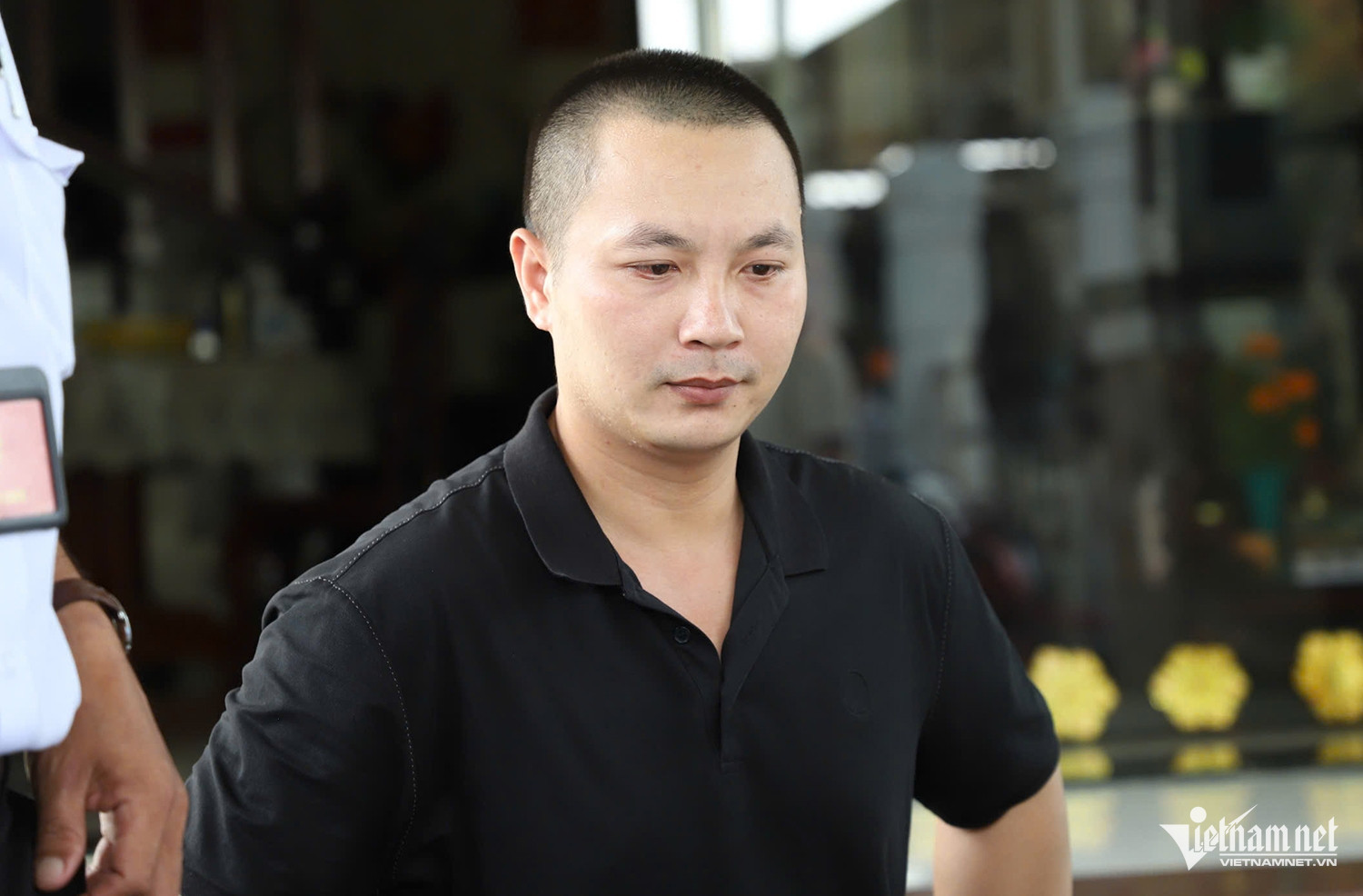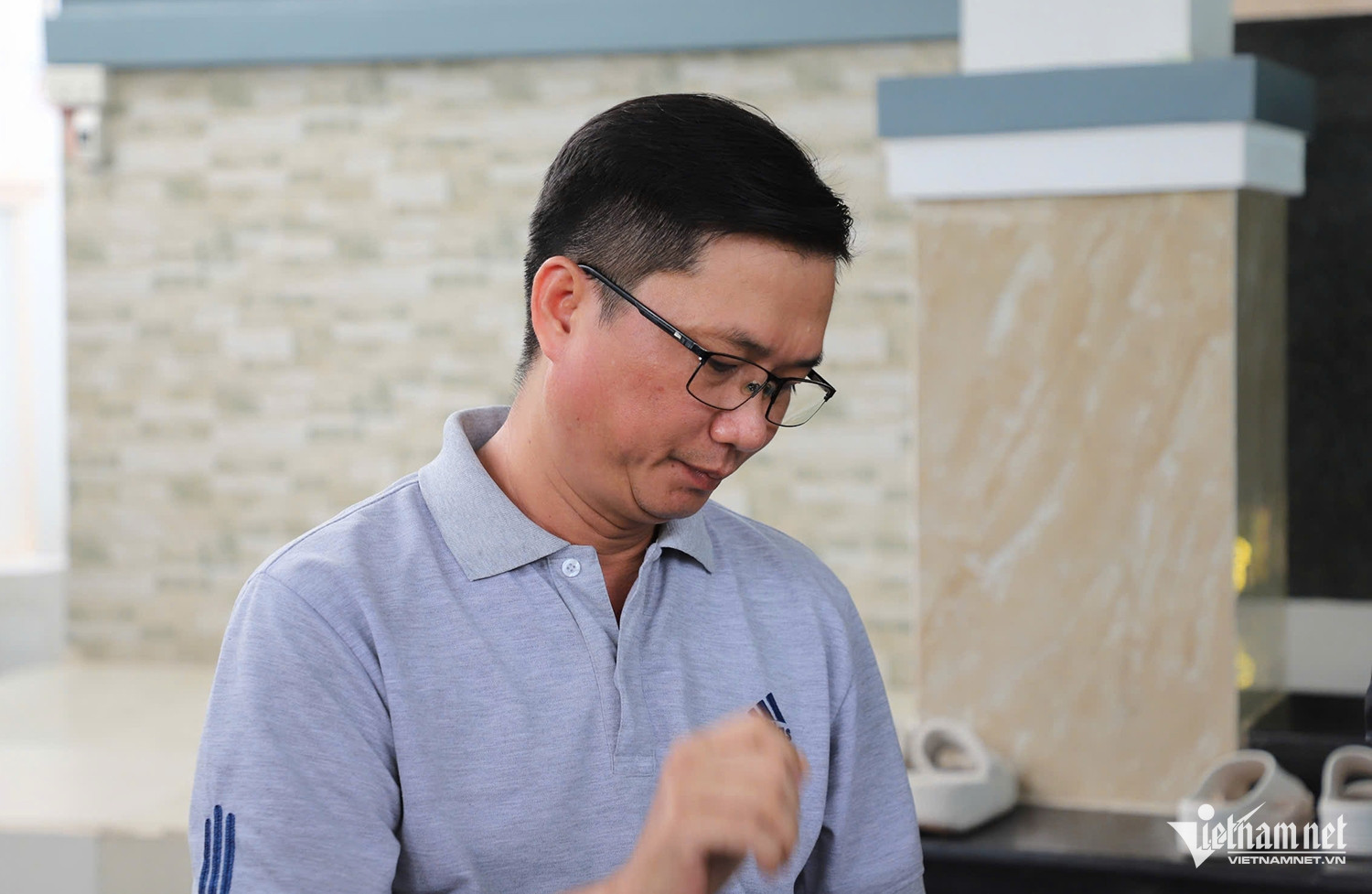A representative from C.P. Vietnam has admitted that a viral photo showing a pig with “abnormal signs” was indeed taken at the Dung Nga slaughterhouse. The animal was subsequently destroyed on-site and boiled for fish feed.

The inspection team speaks with the slaughterhouse owner. Photo: Tran Tuyen
On June 2, a joint inspection team from Hau Giang province conducted an on-site investigation at the Nguyen Dan and Dung Nga slaughterhouses. Both facilities are subcontracted by C.P. Vietnam, which operates within the province.
The inspection followed a request from the Department of Agriculture and Environment of Soc Trang province to verify public allegations that a photo of a diseased pig was taken in Hau Giang.
At around 9:30 a.m., the inspection team arrived at Dung Nga slaughterhouse, located near National Highway 1 in Long Thanh commune, Phung Hiep district.
The facility, operated by Tran Thi Nga, was housing approximately 500 pigs from C.P. Vietnam. According to the owner, an average of 30 to 40 pigs are slaughtered each day, depending on demand.
Slaughterhouse owner confirms photo location

Cuong denies that diseased pigs were ever supplied to the Soc Trang market. Photo: Tran Tuyen
Regarding the photo of a diseased pig, allegedly taken at around 2:30 a.m. on March 26, 2022, and posted online by a whistleblower accusing C.P. Vietnam, Nguyen Chi Cuong, the facility’s representative, confirmed the image was taken at their premises.
Cuong explained that pigs are delivered in healthy condition with valid veterinary certificates. However, during the extended slaughtering process, one pig began to exhibit “abnormal signs.”
“As soon as we detected it, we notified the company for instructions. Their staff photographed the animal and sent the image via Zalo to request disposal,” Cuong said.
He added that the destruction of the pig was documented with written records involving veterinary personnel, company staff, and the slaughterhouse team. The pig showing “abnormal signs” was handled according to regulations.
“If that pig hadn’t been destroyed and was released into the market, veterinary authorities would have filed a report and blocked its distribution,” Cuong asserted.
He firmly reiterated that the pig in question was properly destroyed and never transported to Soc Trang or any other location.
Company representative addresses the issue

At around 10:25 a.m., Ha Huu Tam, a representative from C.P. Vietnam in Hau Giang, joined the inspection team.
Tam confirmed the diseased pig image was posted by L.Q.N., a former company employee, on social media. However, he was unsure how the individual had obtained the photo.
Tam acknowledged the image was indeed taken at Dung Nga slaughterhouse and had been used internally to report the incident to the company. “The pig was destroyed at the slaughterhouse, cooked, and repurposed as fish feed,” he said.
When the inspection team requested documentation proving the pig’s disposal, Tam made a phone call and later presented a single sheet of paper (content undisclosed).
At 11:40 a.m., the joint inspection team conducted separate meetings with the relevant parties.
Trinh Hung Cuong, Director of the Provincial Sub-Department of Livestock Production, Animal Health, and Fisheries, emphasized that this verification process aims to rectify shortcomings and clarify ambiguities to ensure fairness and transparency.
“We require detailed and honest reports from the slaughterhouse owner, C.P. Vietnam staff, and meat inspection personnel about the entire incident. Once all data is compiled, the inspection team will submit an official report to the Department of Agriculture and Environment for review and further action,” he stated.
Tran Tuyen